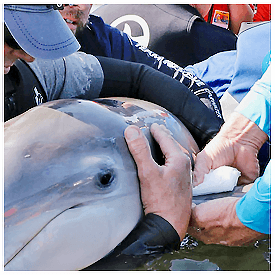The Georgia Aquarium, owners of the 1938 Marineland attraction in Flagler County, have reportedly obtained any required Florida Fish and Wildlife Conservation Commission approval to draw blood samples from Atlantic bottlenose dolphins in their natural habitat.
Non-profit Mote Marine Laboratory in Sarasota has been working with the Commission on plans to better understand the causes and effects of Karenia brevis, the “Florida red tide” organism. Mote often works with local county-level partners.
In studying this collection of nerve toxins, called brevetoxins, Mote is said to have enlisted the aid of Georgia Aquarium, who has owned and operated the former Marine Studios since 2011, along with NOAA and Florida Atlantic University. National Centers for Coastal Ocean Science in Silver Spring Maryland also provided information concerning the biological effects of contaminants, harmful algal bloom detection, and forecasting.
The Georgia Aquarium Conservation Field Station is participating in the research by contributing exemplar data from local dolphin populations in northeast Florida for comparison to test populations in the Florida Gulf Region. Researchers have been able to contribute important information about our local ecosystems and ocean life.
“We hope to contribute to the scientific community the knowledge and tools that we gain in this research, as part of our mission to effectively protect marine mammals,” a spokesperson at UF Whitney Lab told Historic City News. “Additionally, we can draw parallels between marine mammal health, the state of the environment, and the implications for human health.”
UF Whitney Lab
In addition to blood analysis, monitoring also includes researchers taking waters samples along beaches and from boats in nearshore and offshore waters. Mote is expected to publish the research findings and present the data at future scientific meetings.
Discover more from HISTORIC CITY NEWS
Subscribe to get the latest posts sent to your email.




